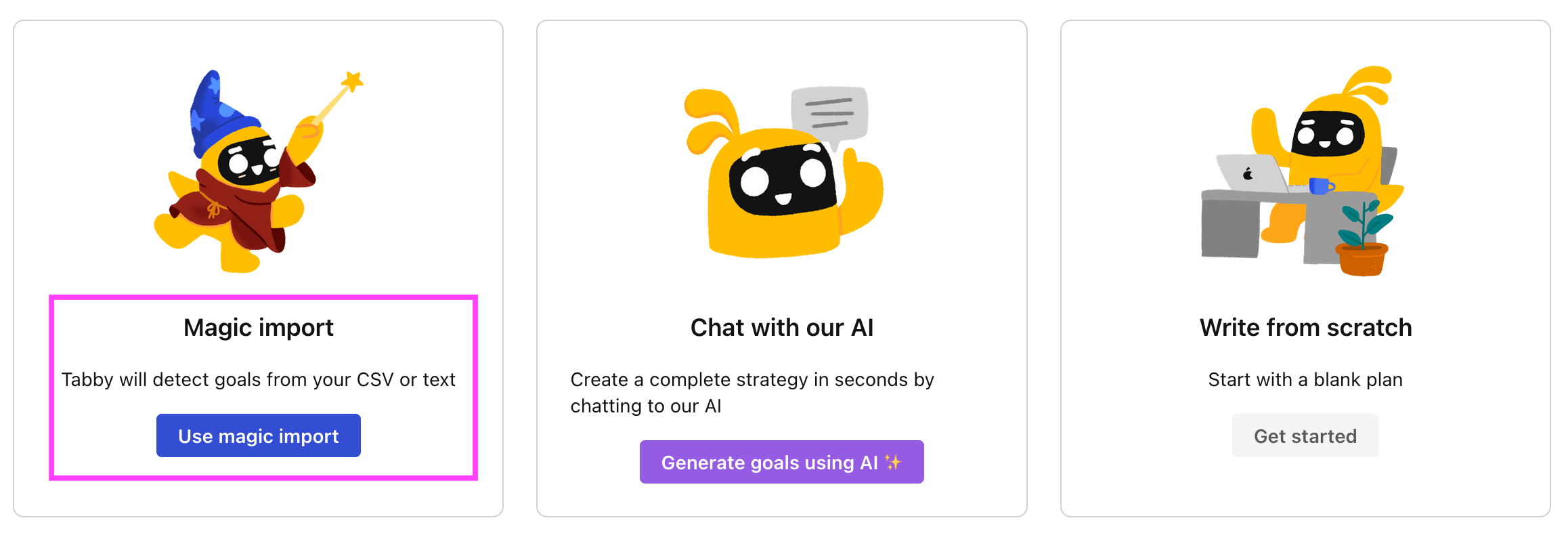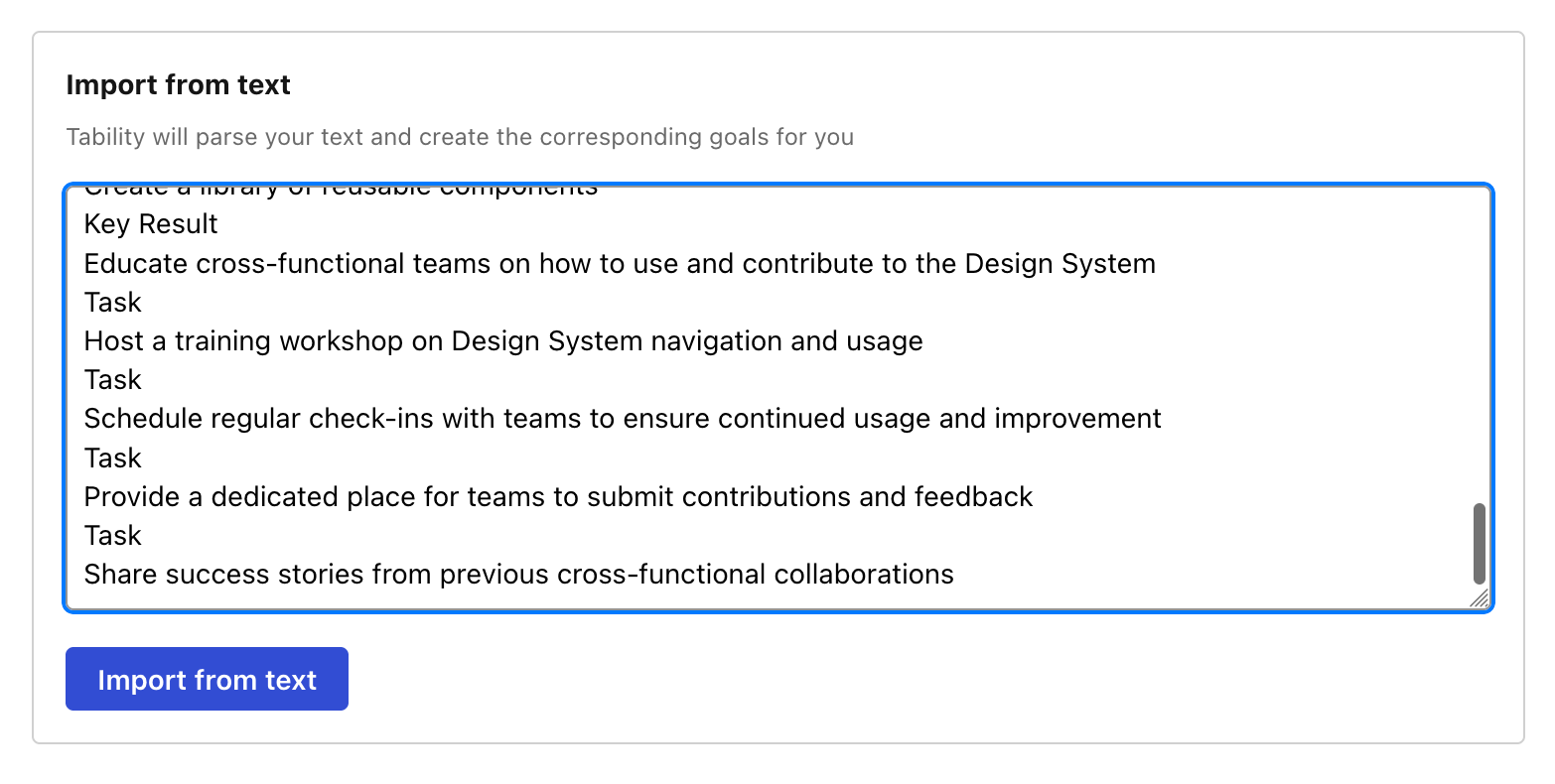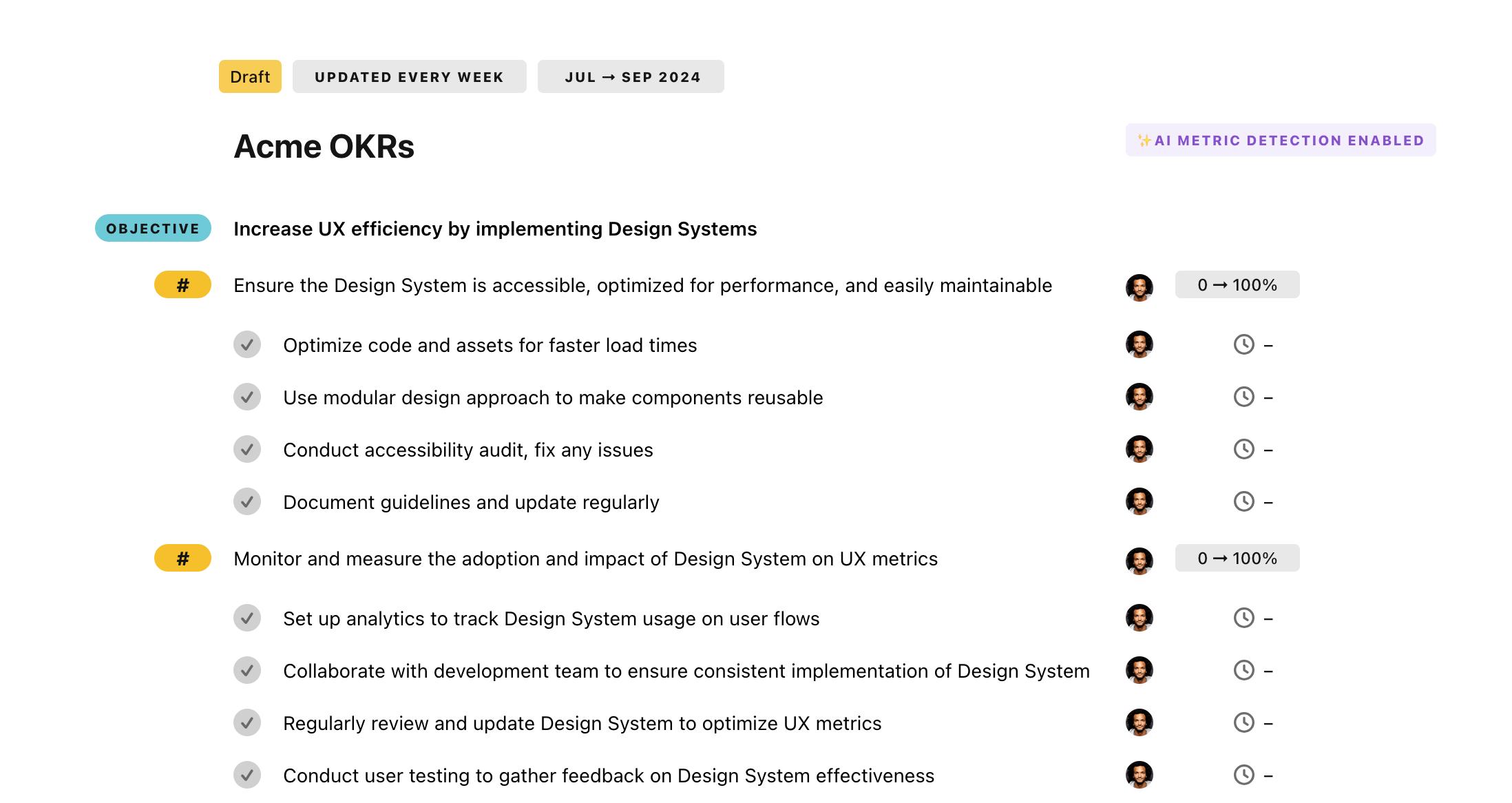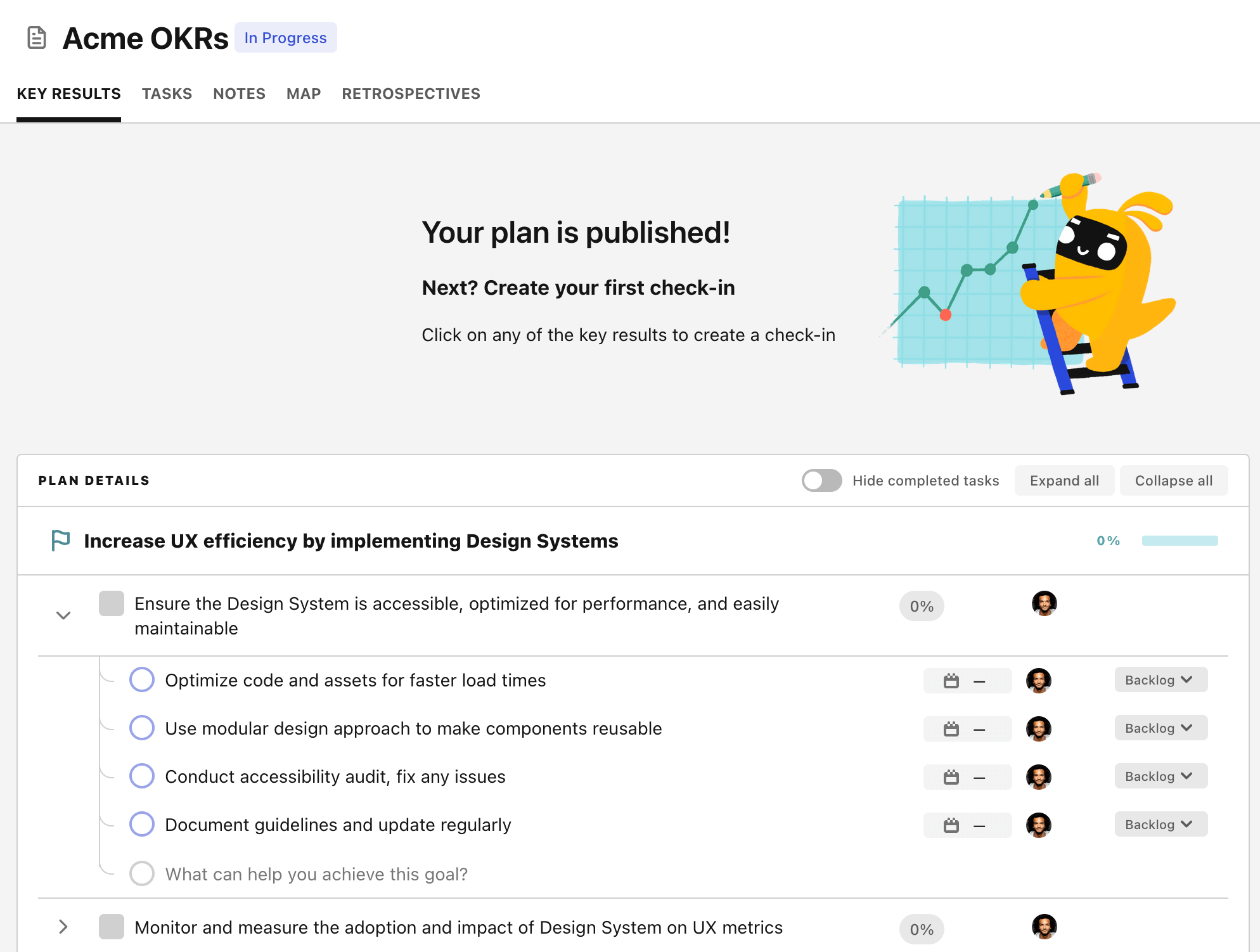OKR template to enhance time management for a balanced and comprehensive scheduling
Your OKR template
The second objective focuses on adhering to the created schedule at least 80% of the time each week. This target can be achieved by continuously reviewing and updating the timetable, setting reminders for forthcoming tasks, and prioritizing the more immediate assignments in the schedule.
The final objective is to minimize overflow time spent on tasks by promoting effective time tracking, aiming for a 15% reduction. To attain this, the team will be given training on efficient task execution techniques. Implementation of a time monitoring tool and regular assessment and adjustments will be performed to maximize time use.
In summary, this OKR targets optimal time management through the establishment of a structured schedule and promotion of effective adherence and time tracking to minimize time wastage and boost productivity.
ObjectiveEnhance time management for a balanced and comprehensive scheduling
KRImplement a daily routine scheduling system with segmented time slots
Research and choose a suitable scheduling software or app
Set up regular daily time slots within the system
Train employees to use the new scheduling system
KRSuccessfully adhere to the created schedule 80% of the time each week
Regularly review and update the schedule
Set reminders or alarms for each task
Prioritize tasks in the created schedule
KRMinimize excess time spent on tasks by 15% through effective time tracking
Train team on efficient task execution techniques
Implement a time tracking tool for efficient monitoring
Regularly analyze and adjust time allocation
How to edit and track OKRs with Tability
You'll probably want to edit the examples in this post, and Tability is the perfect tool for it.
Tability is an AI-powered platform that helps teams set better goals, monitor execution, and get help to achieve their objectives faster.
With Tability you can:
- Use AI to draft a complete set of OKRs in seconds
- Connect your OKRs and team goals to your project
- Automate reporting with integrations and built-in dashboard
Instead of having to copy the content of the OKR examples in a doc or spreadsheet, you can use Tability’s magic importer to start using any of the examples in this page.
The import process can be done in seconds, allowing you to edit OKRs directly in a platform that knows how to manage and track goals.
Step 1. Sign up for a free Tability account
Go tohttps://tability.app/signup and create your account (it's free!)
Step 2. Create a plan
Follow the steps after your onboarding to create your first plan, you should get to a page that looks like the picture below.

Step 3. Use the magic importer
Click on Use magic import to open up the Magic Import modal.
Now, go back to the OKR examples, and click on Copy on the example that you’d like to use.

Paste the content in the text import section. Don’t worry about the formatting, Tability’s AI will be able to parse it!

Now, just click on Import from text and let the magic happen.

Once your example is in the plan editor, you will be able to:
- Edit the objectives, key results, and tasks
- Click on the target 0 → 100% to set better target
- Use the tips and the AI to refine your goals
Step 4. Publish your plan
Once you’re done editing, you can publish your plan to switch to the goal-tracking mode.

From there you will have access to all the features that will help you and your team save hours with OKR reporting.
- 10+ built-in dashboards to visualise progress on your goals
- Weekly reminders, data connectors, and smart notifications
- 9 views to map OKRs to strategic projects
- Strategy map to align teams at scale